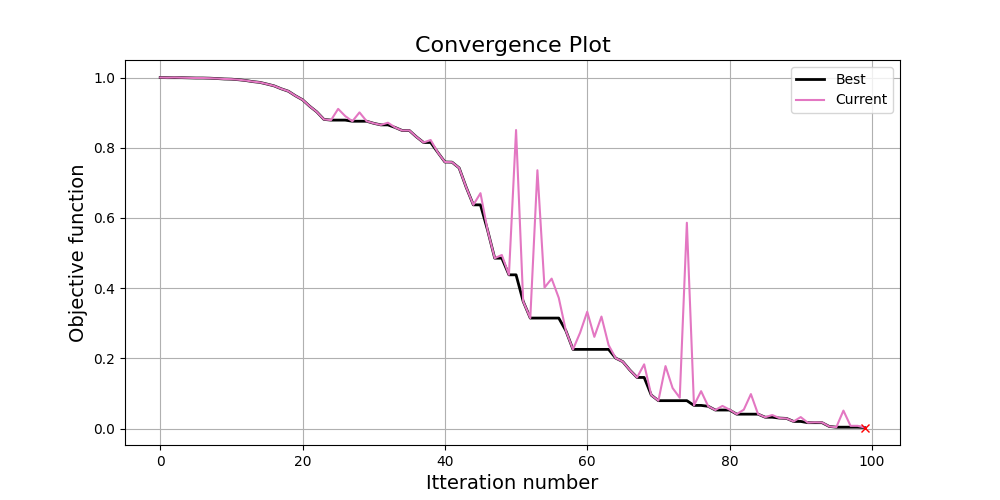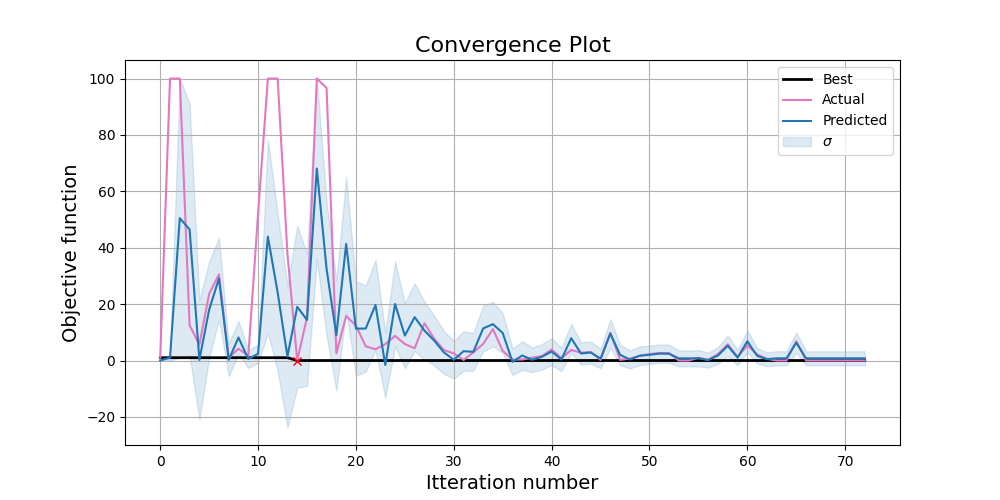Development example
This example is aimed at people who want to help develop this library, either by adding new optimisers or extending existing optimisers! This is also demonstrates how the intergration tests are implemented in this repository.
A major issue with optimising monte carlo sims is that they are very slow. This can make development and testing very painful! For this reason, we have included functionality where one can call a ‘Topas Emulator’. Basically this is just a function that does nothing, allowing you to test your optimisation algorithm on the rosenbrock function, which is a very commonly used function to test optimisers, and has a known global minimum.
This example demonstrates this process.
Set up base directory
You will want to set up your base directory in a same way that you did in the other examples. The key difference is:
GenerateTopasScripts code do nothing, and can be almost empty
When you instantiate the optimser, you must set TopasLocation=’testing_mode’.
GenerateTopasScripts:
def GenerateTopasScripts(BaseDirectory, iteration, **variable_dict):
return ['dummy_script'], ['dummy_script']
TopasObjectiveFunction
"""
This does nothing, it is just here to enable tests to run
"""
def TopasObjectiveFunction(ResultsLocation, iteration):
return 0
developmen_main.py:
import sys
import numpy as np
from pathlib import Path
from TopasOpt import Optimisers as to
BaseDirectory = '/home/brendan/Documents/temp'
SimulationName = 'development_test'
OptimisationDirectory = Path(__file__).parent
# set up optimisation params for rosen function:
optimisation_params = {}
optimisation_params['ParameterNames'] = ['x', 'y']
optimisation_params['UpperBounds'] = np.array([1, 1])
optimisation_params['LowerBounds'] = np.array([-1, -1])
optimisation_params['start_point'] = np.array([0, 0])
# Remember true values are [1.82, 2.5, 27]
optimisation_params['Nitterations'] = 100
# optimisation_params['Suggestions'] # you can suggest points to test if you want - we won't here.
ReadMeText = 'This is an example in which the rosen function is minimised, and demonstrates how this library' \
'can be tested without actually calling topas'
Optimiser = to.NelderMeadOptimiser(optimisation_params, BaseDirectory, SimulationName, OptimisationDirectory,
TopasLocation='testing_mode', ReadMeText=ReadMeText, Overwrite=True, KeepAllResults=False)
Optimiser.RunOptimisation()
Limitations
This approach tests a lot of the code, but it doesn’t test the users own code (GenerateTopasScripts and TopasObjectiveFunction).
Results
Just for fun, here are the results of the currently implemented optimisers at optimising the rosebrock function:


| x | y | Itteration | |
|---|---|---|---|
| NelderMead | 0.95 | 0.95 | 95 |
| Bayesian | 1 | 1 | 14 |
The ground truth value is x=1, y=1 - we can see that in this case the Bayesian optimser found the true ground truth on the 14th iteration. The NM never found it, but was steadily converging towards it and probably would have gotten there (or very close) with enough iterations.